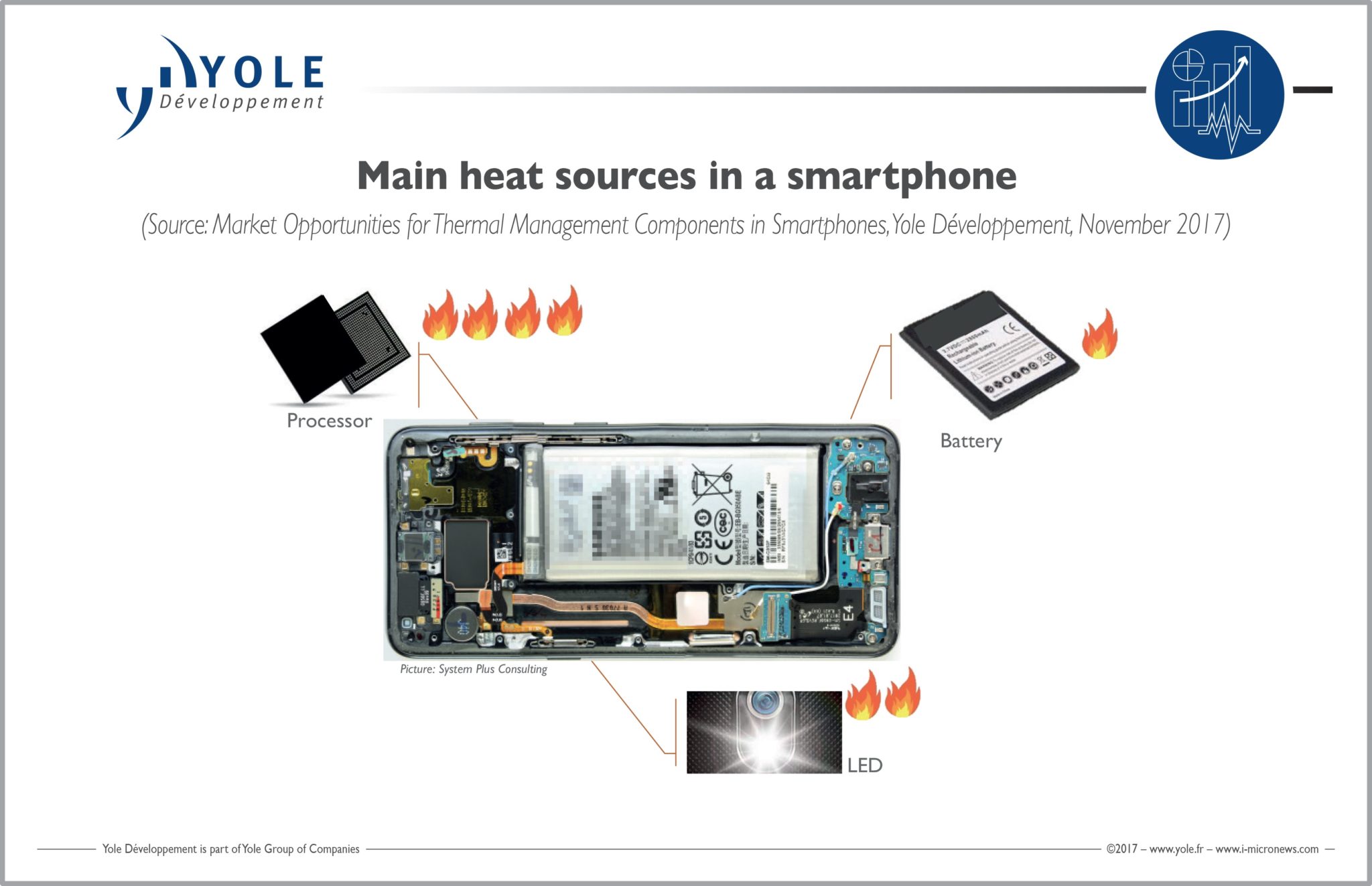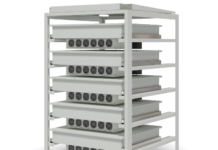
Many thermal management technologies have been developed and tested to support new requirements and follow industries evolution. Therefore the market for thermal management solutions is today clearly in expansion. Amongst the numerous industries, the growing smartphone market, expected to reach almost 2.1 billion smartphones annually by 2022, represents a great opportunity. Indeed thermal management solutions enable better performance and longer lifetime as well as comfort and safety for the end-users.
The thermal management components for smartphone applications is showing more than 26% CAGR between 2016 and 2022. The components involved include packaging, PCB, heat pipe/vapor chamber, thermal sheet, smartphone back cover etc.
Many companies are today deeply involved in the development of innovative thermal management solutions and would like to ensure their business expansion in this field. Beyond the interest for smartphones, thermal management solutions could also be applied in other electronic devices: power electronics and automotive components are part of them. That is why lot of companies are keeping a close eye on this topic and lot of questions are pending…
Smartphones contain several components that generate heat, and components whose performance and lifetime is negatively impacted by heat. Excessive heating of some components, such as lithium ion batteries, has to be carefully handled for safety reasons. The processor is the most important and hottest component in a smartphone.

“To improve low power and high efficiency processors, companies including Apple and Samsung decreased their technology node up to 10 nm,” explains Elena Barbarini, Senior Cost Engineer at System Plus Consulting. “This approach allowed an I/O increase, more than 1,500 solders balls for the latest generation as well as a decrease the processor die size”.
Amongst the other heat-generating components in a smartphone, Yole’s analysts mention image sensors, light sources and batteries. Suitable thermal management solutions are now sought to avoid hot spots in smartphone and keep the component temperature at acceptable levels. The enclosure temperature, or skin temperature, must be also kept relatively low to avoid users feeling uncomfortable when using the smartphone.
So what are today’s solutions? Smartphones pose a significant challenge to the implementation of traditional cooling schemes, such as heat sinks and fans, due to form factor limitations and the specific way the device is used by customers.
According to Yole’s analysts, there are different approaches for thermal management, based both on hardware and software solutions. Software thermal management (STM) has several advantages. It enables additional design flexibility and an optimal reaction to a given thermal event and can be improved by a software update in existing products. Contrary to hardware solutions, such as heat pipes, STM does not take additional space in smartphone.
The optimal way to deal with heat in smartphones would be to reduce heat generation, by using higher performance chips. Significant improvements have been made in chip manufacturing, with the 10 nm node introduced in 2016, and chip architectures, including multiple core architectures, with “high-power” and “low-power” cores, associated with appropriate software control. However, in the future, processor improvements might be not fast enough to follow rapidly elevating customer requirements for smartphone functionality and performance.
So other thermal management solutions will increasingly be needed. Similar trends were observed in the past, when thermal transfer sheet performance was not sufficient to dissipate heat from poorly thermally designed processors, leading to heat pipes being introduced into the first smartphones from NEC and Sony. Today, the Samsung Galaxy S8, LG G5, Google Pixel 2 XL are just a few examples of smartphones relying on heat pipes to improve their thermal management.
Alternatively, vapor chambers might perform better than heat pipes in the near future. Ultrathin vapor chambers are already under development by several players, such as Furukawa Electric, TaiSol, AVC and Delta, but still face difficult technology challenges.
Yole Group of Companies including System Plus Consulting and Yole Développement (Yole) is conducting extensive researches to answer to the market questionings. The group proposes today two dedicated reports: Market Opportunities for Thermal Management Components in Smartphones report from Yole and Thermal Management In Smartphones: Technology Comparison report from System Plus Consulting.
The market & technology report from Yole is a comprehensive overview of the smartphone thermal management solutions, covering hardware and software. It details the technical trends and strategies to deal with thermal issues. Market forecasts, players’ landscape including all key thermal management components are analyzed in this new report.
In parallel, System Plus Consulting performed a comparative technology review. This analysis provides insights focused on the assembling structure as well as an overview of the thermal management technologies of 10 flagship smartphones from leading suppliers including Apple, Samsung, Huawei, LG and Xiaomi.
How can smartphones deal with growing heat management challenges? What are the current solutions? Who are involved in this industry? Yole and System Plus Consulting analysts offer you today a snapshot of this promising industry.
“The importance of thermal management in smartphones is due to the growing number of smartphone functionalities and raised customer requirements for processing speed, leading to increased heat dissipation,”explains Dr Milan Rosina, Senior Analyst for Energy Conversion and Emerging Materials at Yole. And he adds: “Additional components needed to ensure new smartphone functions desired by customers, including wireless charging, high-resolution cameras, 3D gaming, security, authentication, and high-speed streaming, also result in denser component integration, making thermal management even more difficult.”
A detailed description of Yole Group of Companies reports is available on i-micronews.com, battery & Energy Management reports section.


















